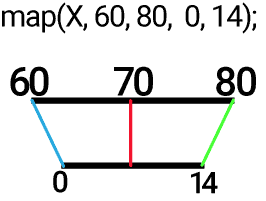Code
The code in the editor below is ready to run! Plug your Code Lab in to your computer's USB port with the cable and hit 'Upload Your Code!' to see what it does. Change something in the code, like a delay or pin number. Try to add something new to the program - it's yours to tinker with! You can always press the 'Restore' button to return the code to the working example.
Video Notes for Code Lab Users:
You will use “50” instead of “15” as the first argument in your LEDStrip function.
The second and third arguments of the LEDStrip function (13 and 12) do not need to change. These connections are permanently set on Code Lab.
Your “map” function has an argument of 49 instead of 14 because you have 50 LEDs on your Code Lab. The video references an LED strip with only 15 LEDs.
The video walks through an example using a temperature of 70. With Code Lab, this will translate to about 25 LED pixels lit, not 7. In the second example where the temperature equals 80, there will be 50 pixels lit, not 15 as the video says. In this second example, the “for” loop will run 50 times, not 15 times as the video says.

Use this spectrum to estimate the color values you'll need for your 'setPixel' arguments to achieve your favorite color!

This graphic represents how some values from the turn knob will be 'mapped' onto the pixel colors of the LED strip.

